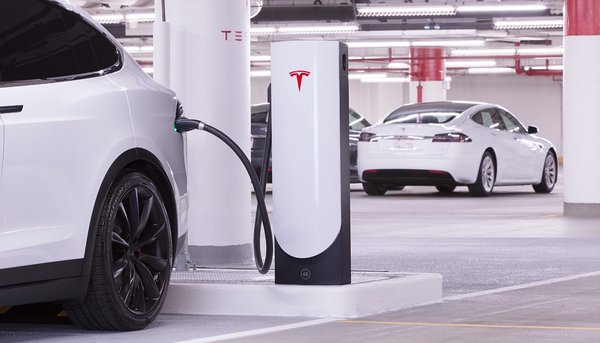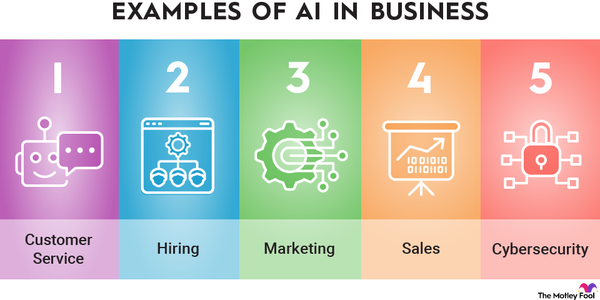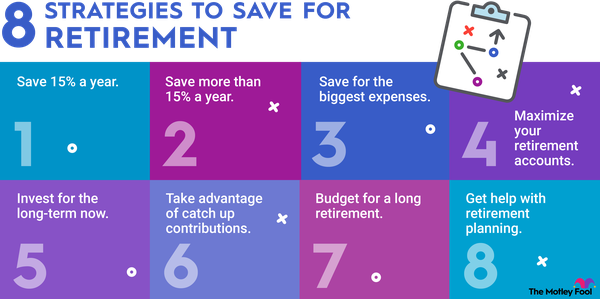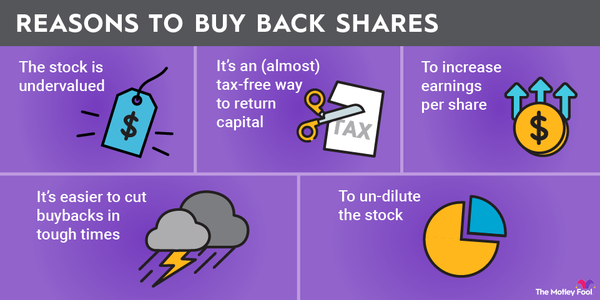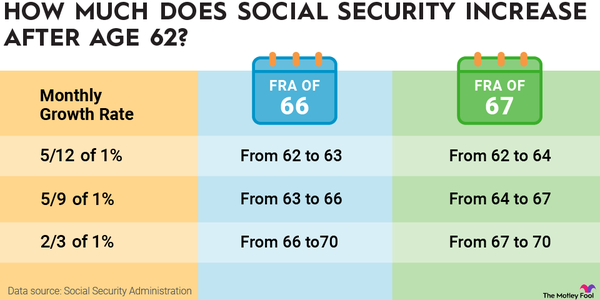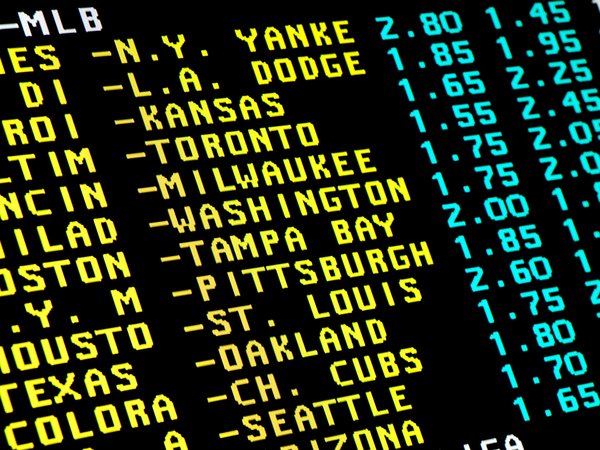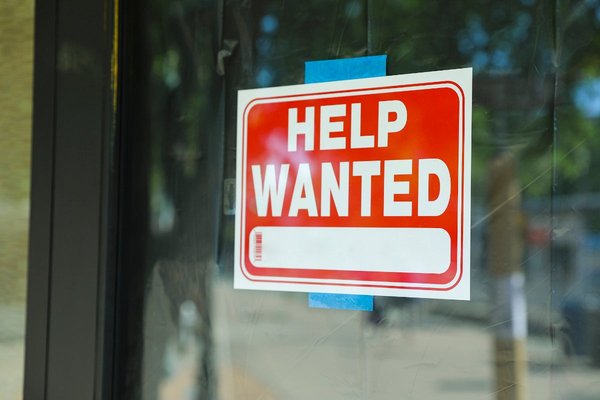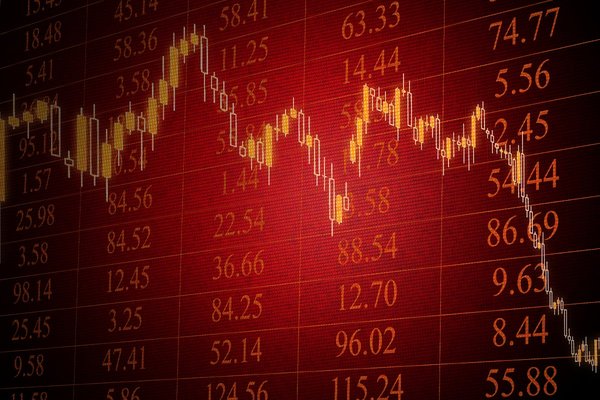Most investors are familiar with an initial public offering, or IPO for short. While this is a popular way to take a private company public, it's not the only method available. Another option is for the private company to merge with a special-purpose acquisition company, also known as a SPAC or a "blank-check company."
SPACs have been growing in popularity. Since the start of 2020, they represent more than half of total U.S. IPOs.
The Motley Fool’s SPAC Statistic Report includes the latest SPAC data, including SPAC deals by market sector and what kind of returns investors have been getting.
The Difference Between SPACs and IPOs
The Difference Between SPACs and IPOs
A SPAC is a shell company created to go public and then find and merge with a private company. A traditional IPO is when a private company goes public on its own by issuing shares and selling them on a public stock exchange.
Key advantages of SPACs are that they offer a much faster way for a company to go public, they allow both sides to negotiate a share price up front, and SPAC sponsors might be able to lend their expertise and raise capital through private investments.
However, SPAC sponsors generally end up with 20% or more of the company's shares after the merger, and target companies in SPACs don't go through a rigorous underwriting process like they would with traditional IPO deals.
SPAC IPOs by Year
SPAC IPOs by Year
The number of SPAC IPOs fluctuates quite a bit from year to year, but it's trending upward. From 2003 through 2013, SPAC IPOs made up about 11% of total U.S. IPOs. There were 205 SPAC IPOs compared to 1,955 total IPOs during that period.
From 2015 through the middle of 2025, the percentage of IPOs involving a SPAC increased to 46%. There were 1,270 SPAC IPOs and 2,749 total IPOs over that time period.
SPAC IPOs peaked in 2021, when there were 613, which accounted for 63% of all IPOs that year. Since then, there have been fewer than 90 SPAC IPOs per year, although there have been over 60 as of the halfway point in 2025.
“SPAC issuance in 2021 was unsustainable,” Don Duffy, president of ICR, a financial communications and advisory firm with SPAC market expertise, told The Motley Fool. “There were too many SPAC IPOs at a time when asset values were also inflated, which led to many bad deals. 2022-2024 saw the market correct.”
“The 2021 SPAC mania saw way too many IPOs,” Benjamin Kwasnick, Founder of SPAC Research, added. “With a less crowded field and an improvement in the set of outcomes we're seeing from live deals, sponsors are more enthusiastic about coming back to the market,” he continued.
According to Donghang "DH" Zhang, PhD, finance professor at the University of South Carolina’s Darla Moore School of Business, macroeconomic conditions including lower interest rates and pandemic stimulus checks played a major role in the 2020-2021 SPAC surge.
“These market conditions were nearly perfect for riskier companies to go public, especially those with a good story to tell (e.g., EV companies),” Zhang said. “So, we had a surge in SPAC IPOs, as well as traditional IPOs.”
Inflation, tighter monetary policy, and disappointing SPAC IPO returns led to fewer IPOs in the years following, but “The SPAC IPO market is not dead,” Zhang said.
SPAC experts see 2025 as a rebound year for SPAC IPOs, albeit not close to the levels seen in 2020 and 2021.
“The SPAC market is more than alive and well, it’s thriving and robust,” Douglas S. Ellenoff, a securities lawyer who has led hundreds of SPAC IPOs, said. “The number of SPAC IPOs has markedly increased this year versus all of last year. The number of potential targets has also increased. There have been significantly more deSPACs announced this year than traditional IPOs. SPACs have also announced very large crypto reserve transactions that are being very positively received by the market.”
SPAC Deals by Sector
SPAC Deals by Sector
In any given year, there's typically a mix of SPAC deals across several market sectors, without a single dominant industry. Technology, healthcare, and energy had the most SPAC deals in 2024 and are leading the way in 2025 as of June.
Note that this data is based on when the merge deal was announced, not the date of the SPAC's IPO. It also doesn't count SPACs that haven't announced a merge partner.
Why do tech, energy, and healthcare dominate SPAC IPOs? Those are sectors with existing hype around them.
“If individual investors are excited about a sector, it is easier to find operating companies willing to tap into the investor enthusiasm by going public,” said Jay R. Ritter, PhD, emeritus professor at the University of Florida’s Warrington College of Business. “One of the patterns that behavioral finance researchers have documented is that people tend to chase past returns. During the SPAC boom of 2020-2021, there was a lot of enthusiasm for electric cars and autonomous vehicles, partly fueled by Tesla’s soaring share price.”
Kwasnick added that “sponsors often have to make a tough choice between fundamental investments and thematic investments. Deals in areas like nuclear energy and crypto-adjacent companies have seen a lot of retail demand, which makes them easier to sell to the market in general.”
“To some extent tech and healthcare are evergreen. Good companies in these spaces can almost always find investment demand. But the fundamentals have to be there for investors to ultimately buy in,” he said.
SPAC Returns by Year
SPAC Returns by Year
For shareholders and potential investors, the million-dollar question is how SPACs perform, particularly postmerger. The answer is well below average, based on results from 2012 through 2024 gathered in a University of Florida study. SPAC returns as a whole were below the overall market return every single year -- by as much as 73.6%.
We opted to use de-SPAC returns instead of returns since the IPO. A de-SPAC transition occurs once a deal is announced between a SPAC and a private company. The de-SPAC returns better reflect the business's actual performance instead of market sentiment and speculation. They show a clearer investment outcome and are based on the public company's fundamentals, not market hype.
To be fair, one-year returns don't always tell the whole story. But when we adjust our focus to de-SPAC returns over three years, results are even worse, outside of a lone bright spot for 2015 mergers.
Ritter, who tracks SPAC returns, said, “In 2025, we are on pace to exceed 100 SPAC IPOs, but it is still the case that the deSPACs have been remarkably unsuccessful.”
Retail investors can attempt to make consistent returns on SPACs by tracking how institutional investors approach deals. “A retail investor can mimic their investment strategies if they track all the deadlines carefully and execute redemptions when needed,” Zhang said. “So, one can certainly invest in SPACs and earn proper risk-adjusted returns.”
Still, SPACs come with risk. “Retail investors are often aware that investing in memes and themes can be a game of hot potato,” Kwasnick said. “Investors should be conscious of whether they're buying a trend or investing on fundamentals.”
SPAC Returns by Sector
SPAC Returns by Sector
SPAC returns vary significantly by market sector and, since 2009, haven’t turned positive in any one sector overall, according to data from SPACInsider. In most sectors, the average return has been worse than -50%.
Investing in SPACs
Investing in SPACs
Although SPACs have been around since the 1990s, the last few years is when they've really taken off. The 613 SPAC deals in 2021 are far more than there have been in any other year so far, and SPACs are making up a larger portion of total IPOs.
SPACs aren't without their critics, though. A 2022 report by Senator Elizabeth Warren alleges that Wall Street insiders use SPAC deals to enrich themselves and harm retail investors in the process.
In January 2024, the Securities and Exchange Commission (SEC) introduced new SPAC regulations for more transparency and to encourage more realistic financial projections. Analysts are split on the impact those rules have had.
“The jury isn’t out and the results are that the changes implemented pursuant to the New Rules have had zero positive effect for investors and, if anything, harm investors,” Ellenoff said.
Others see the regulations in a more positive light for SPACs and investors. “The SEC rule changes in 2024 have certainly leveled the playing field in terms of requirements on information disclosure for traditional IPOs and deSPAC mergers,” Zhang said. “[T]heoretically, the rule changes do help prevent high-flying companies from making aggressive projections that they may not be able to do for a traditional IPO. That being said, traditional IPOs often underperform the overall market as well.”
SPAC activity in 2025 confirms that they’re here to stay as a vehicle for companies to go public. For investors, careful deal-by-deal scrutiny remains essential.
Expert Quotes
Expert Quotes

Jay Ritter, PhD
What factors do you think contributed to the sharp drop in SPAC IPOs after their 2021 peak, and do you see those headwinds easing or persisting through 2025?
Jay R. Ritter, PhD: “Except for 2020 and 2021, there has never been a year with as many as 100 SPAC IPOs. In 2025, we are on pace to exceed 100 SPAC IPOs, but it is still the case that the deSPACs have been remarkably unsuccessful. In 2019 and 2020, there were a number of very successful deSPACs. Among them were Vertiv (VRT), MP Materials (MP), and Draftkings (DKNG), all of which have produced high returns for investors and today have market caps in the billions or tens of billions. But in 2021 the number of mergers that were followed by very negative returns increased, leading to the collapse of SPAC IPO activity. Too many SPACs were chasing a limited number of merger partners. Many of these SPACs liquidated without completing a merger, in which case the shareholders got their money back, with interest.”
What do you think makes tech, energy, and healthcare especially appealing for SPAC sponsors and targets?
Jay R. Ritter, PhD: “If individual investors are excited about a sector, it is easier to find operating companies willing to tap into the investor enthusiasm by going public. One of the patterns that behavioral finance researchers have documented is that people tend to chase past returns. During the SPAC boom of 2020-2021, there was a lot of enthusiasm for electric cars and autonomous vehicles, partly fueled by Tesla’s soaring share price. A lot of the startup companies in this sector wanted to grow quickly, and that required cash. Many healthcare companies, especially life science startups, need cash to finance their R&D activities. In all financial markets, a combination of the supply of shares by companies and demand from investors for these shares generates the transactions.”
Have recent SEC rule changes in 2024 improved SPAC deal quality or investor protections meaningfully—or is the jury still out?
Jay R. Ritter, PhD: “For the 22 deSPACs (mergers) completed in the six months between October 2024 and March 2025, as of July 1, 2025, the average share price has fallen from more than $10 per share at the time of the merger to $2.60, with 21 out of 22 stocks trading below $5 per share. Thus, there is no evidence to date that the S.E.C. rule changes have improved the outcomes for investors.”
Are there any signs that the SPAC model is evolving—perhaps in structure, sponsor incentives, or target selection—to address its reputation for overall poor returns?
Jay R. Ritter, PhD: “There have been some changes, but other things have not changed. Today, the terms of a SPAC IPO are usually a little more favorable to investors than was the case 3 or 4 years ago. But at the time of a merger, there have not been the changes that would be necessary to discourage SPAC shareholders from redeeming and taking their money back. The changes that would be necessary for there to be successful mergers are two-fold: 1) The sponsors should take a smaller cut of the action, and 2) the sponsors should stop overpaying when they propose a merger. A typical merger might value the operating company at $400 million, when it really is worth only $200 million. If the operating company was valued at $200 million, the SPAC shareholders might not redeem their shares. If they did not redeem, the SPAC would be able to deliver a lot of cash to the operating company, and the merger might be successful. The operating company doesn’t benefit from the overvaluation, however, for two reasons. First, if 99% of the SPAC shareholders redeem, the operating company does not receive any cash (merger costs take up at least 1%). Second, because the shareholders of the operating company typically are subject to lockups that prevent them from selling shares for six months or more after the merger, by the time they sell, the share price might have fallen by more than 50%. Until these overpayments end, almost all SPAC mergers are doomed to result in very negative returns for public market investors.”
What should retail investors look for when evaluating a SPAC opportunity today—especially given the steep average de-SPAC losses across most sectors?
Jay R. Ritter, PhD: “Buying a SPAC IPO, which typically is a unit sold for $10.00 that is composed of a share + a fraction of a warrant, is a safe investment that generally returns $10 + interest and gives some additional upside potential. The SPAC IPOs typically are bought by hedge funds, but individuals can usually buy them in the market at a little over $10, such as $10.05. The unit almost always splits into its two parts—the share and the fraction of a warrant. If a SPAC announces that it will merge with a private operating company, the shareholders have the right to ask for their money back with interest, a process known as redeeming. The investor can keep the warrant, which gives some upside. In almost all proposed mergers, 98-99% of the shareholders ask for their money back. At the time of the merger, an investor should look at the price of the stock. If it is selling for just $10 + interest, asking for your money back is the best strategy, and 99% of investors do this. For these deals, after the merger the stock almost always plummets in price. For a small percentage of deals, however, such as Digital World Acquisition Company’s merger with Trump Media in March 2024, the stock price was well above $10 + interest, so keeping the shares or selling them in the market was a better strategy than redeeming. In my Special Purpose Acquisition Company (SPAC) IPOs Through 2024 Report, there is a table that shows that for the mergers in 2021, 2022, 2023, and 2024, the average return in the year after the merger (or fraction of a year for the 2024 mergers) has been about -60% for those shareholders that did not redeem.”

Donghang “DH” Zhang, PhD
What factors do you think contributed to the sharp drop in SPAC IPOs after their 2021 peak, and do you see those headwinds easing or persisting through 2025?
Donghang “DH” Zhang, PhD: “To understand the sharp drop of SPAC IPO activities after 2021 and think about where they are going for the rest of 2025, we might want to look at how the overall market has evolved over the recent years. The Nasdaq composite index went from its bottom around 7,700 in early March 2020 to a peak around 15,644 towards the end of 2021. It then dropped to around 10,500 towards the end of 2022. What helped the market surge in 2020-2021? The accommodative monetary policies continued to inject more liquidity into the system, and the fiscal stimulus measures in response to the COVID-19 pandemic also injected trillions of dollars into the economy. These monetary and fiscal measures tremendously helped the overall economy and the stock market. On top of that, retail investor enthusiasm really picked up – people had more free cash flow due to fiscal stimulus, (maybe) had more time to trade, arguably due to a shift to remote work. These market conditions were nearly perfect for riskier companies to go public, especially those with a good story to tell (e.g., EV companies). So, we had a surge in SPAC IPOs, as well as traditional IPOs. What caused the sharp drop after 2021? The market went down significantly due to inflation concerns and tighter monetary policy. People were also concerned about the elevated valuations. So, the market was less accommodating for SPACs. Second, some high-flying deSPAC mergers did not deliver (e.g., DraftKings), and the SEC started to scrutinize certain disclosure practices of SPACs. Third, the success of the SPAC IPO market became its own burden. We saw 248 SPAC IPOs in 2020 and 613 in 2021. More SPACs chasing the same pool of potential targets meant that they had less bargaining power, and some got to fail. With all these, retail investor enthusiasm in the market started to disappear. Where will the market go? The SPAC IPO market is not dead. Between 2022 and the first half of 2025, we have 244 SPAC IPOs, with 70 of them occurring in 2025. This pace is nowhere near the surge in 2021, but comparable, or maybe more active than, 2018/19 (105 SPAC IPOs for those two years). Note that the market overall has performed well during this period, with the Nasdaq index standing at above 20,000 now. I always thought the market valuation was elevated, and the stock prices would decline, but I have been wrong on those prices. It seems that the market conditions are still accommodative. The Wall Street Journal also reported that investor enthusiasm – the love for meme stocks and the you-only-live-once mentality – has come back. All these suggest that the SPAC IPO market for the second half of 2025 will maintain its pace. But risks remain. Tariff concerns are coming back, and I still believe that the market valuation is elevated.”
What do you think makes tech, energy, and healthcare especially appealing for SPAC sponsors and targets?
Donghang “DH” Zhang, PhD: “The comparison is often between a traditional IPO and a deSPAC merger for a private company to get publicly listed. Compared to a traditional IPO, a SPAC IPO and the follow-on deSPAC merger has a few advantages: a sponsor who often has experience in certain industries and a pool of cash (not fully committed but is more likely to be available than financing from arms length). Before the SEC rule changes in 2024, one can also argue that a deSPAC merger provides the private company a more attractive platform to make potentially aggressive forward-looking projections. On the other hand, a traditional IPO has stronger support from the underwriting syndicate. Research shows that an investment bank’s investor network is helpful in pricing and allocations of IPO shares. Also, a deSPAC merger is often more costly for the private company going public due to roughly free shares given to sponsors (sponsor shares, and also often called the “promote”). So, given these comparisons, sponsors and private companies would prefer certain industries, such as energy and healthcare, if the advantages of the SPAC route dominate. I do want to point out that industry mixing for deSPAC mergers may not stay the same over time. For example, in a paper by Minmo Gahng, Jay Ritter, and Donghang Zhang (https://papers.ssrn.com/sol3/papers.cfm?abstract_id=3775847), we show that for the period between 2013 and 2021, although target firms from deSPAC mergers were younger and less profitable in 2021, the opposite was true for 2013-2020. They also show internet-related and some other technology companies and biotech firms were more likely to go public via the traditional IPO route.”
Have recent SEC rule changes in 2024 improved SPAC deal quality or investor protections meaningfully—or is the jury still out?
Donghang “DH” Zhang, PhD: “The SEC rule changes in 2024 have certainly leveled the playing field in terms of requirements on information disclosure for traditional IPOs and deSPAC mergers. One way to look at whether these rule changes empirically improved deSPAC merger deal quality and investor protection is to examine the long-run performance of these firms. The aforementioned research by Gahng, Ritter, and Zhang (2023) shows that one- or three-year returns for investors who buy the shares of deSPAC mergers at deal closing day significantly underperform the overall market. Will this pattern improve? I think that we have to wait to see more data. But theoretically, the rule changes do help prevent high-flying companies from making aggressive projections that they may not be able to do for a traditional IPO. That being said, traditional IPOs often underperform the overall market as well.”
Are there any signs that the SPAC model is evolving—perhaps in structure, sponsor incentives, or target selection—to address its reputation for overall poor returns?
Donghang “DH” Zhang, PhD: “A big hurdle for the SPAC model is the high cost due to free sponsor shares. If a SPAC IPO issues 20 million units (each unit typically has one share of common stock and a fraction of a warrant), the sponsor typically receives 5 million shares for a nominal price. When we looked at the deSPAC mergers from 2016 to March 2021 in Gahng, Ritter, and Zhang (2023), we noticed that sponsor haircuts and inducements became more common over time. For these haircuts and inducements, the sponsor of a deSPAC deal typically gave up part of its promote shares and/or warrants to PIPE investors who invested in the target company at the merger. These haircuts de facto lowered the costs caused by free sponsor promotes. Another emerging trend in the data is that earnout provisions for sponsor shares, where sponsor shares can only be vested when the stock price after the deSPAC merger hits certain targets, also became more common. For another ongoing research project, I have collected data on the characteristics of sponsors. I also notice that more and more sponsors have connections with the PE industry. For example, a sponsor could be a former partner at a PE firm. Often, being the CEO of a SPAC is just one job title of a PE firm partner, and the PE firm is financing certain costs of setting up the SPAC (like providing the at-risk capital for purchasing warrants). SPAC financing data from SPACResearch (https://www.spacresearch.com/charts?c=financing) suggests that PIPE investments and forward purchase agreements (FPA) have played an important role in recent years, although these types of financing saw a decline in 2024 and the first half of 2025. These institutional investments can increase the overall cash delivered to the target company at the deSPAC merger and help lower the cost of sponsor promotes in relative terms. All these trends, if they continue, will help play up the relative advantages of the SPAC model and will mitigate its disadvantages of high costs.”
What should retail investors look for when evaluating a SPAC opportunity today—especially given the steep average de-SPAC losses across most sectors?
Donghang “DH” Zhang, PhD: “A recent white paper by Rocky Bryant and Michael Schwert at AQR (https://www.aqr.com/Insights/Research/White-Papers/Are-SPACs-Still-Alive) suggests that SPACs are still a useful asset class for institutional investors. A recent flyer from Gritstone Asset Management (https://www.gritstoneam.com/), a firm that specializes in investing SPACs, suggests that they safely outperform the returns from treasuries even after fees. Gritstone buys SPACs from SPAC IPOs and on the secondary market. A retail investor can mimic their investment strategies if they track all the deadlines carefully and execute redemptions when needed. So, one can certainly invest in SPACs and earn proper risk-adjusted returns. Should a retail investor stay the long term after deSPAC mergers? Or should one buy into deSPAC mergers? The answer here is more challenging. But investors in traditional IPOs face similar questions. Traditional IPOs can underperform, but we also have famous IPOs such as MSFT and Amazon.”

Benjamin Kwasnick
What factors do you think contributed to the sharp drop in SPAC IPOs after their 2021 peak, and do you see those headwinds easing or persisting through 2025?
Benjamin Kwasnick: “The 2021 SPAC mania saw way too many IPOs. At the same time that the market was starting to feel the effect of over-issuance, the SEC came out with draft rule changes that produced significant uncertainty for SPAC participants and the result was a huge drop in issuance. Over the next few years the market was both weak and also feeling the effects of oversupply.
Now that the vast majority of 2021's SPACs are behind us, there's room for more SPAC IPOs again. It's important to consider that the demand for SPAC IPOs never went away (investors are usually happy to allocate to a strategy that yields 30 to 50 basis points over T-Bills, without really sacrificing principal risk). The missing piece was sponsors that are willing to commit risk capital and two years of their life to making a vehicle work.
With a less crowded field and an improvement in the set of outcomes we're seeing from live deals, sponsors are more enthusiastic about coming back to the market, which is to say many of the headwinds have been erased. The regular-way IPO market has been tough this year as well even though the market is at all-time highs, so there are many would-be public companies that are interested in the SPAC format. But some headwinds remain -- while we've seen deals that are trading well and deals with large amounts of common stock PIPE financing (a strong indicator of fundamental investment demand), these are still challenging to come by.”
What do you think makes tech, energy, and healthcare especially appealing for SPAC sponsors and targets?
Benjamin Kwasnick: “Sponsors often have to make a tough choice between fundamental investments and thematic investments. Deals in areas like nuclear energy and crypto-adjacent companies have seen a lot of retail demand, which makes them easier to sell to the market in general. They're also more likely to trade well out of the gate. But if interest in these themes goes cold, it's much harder for these companies to perform well over time.
Sponsors that avoid ‘hot themes’ have to rely on stronger fundamental underpinnings for their deals. To some extent tech and healthcare are evergreen - good companies in these spaces can almost always find investment demand. But the fundamentals have to be there for investors to ultimately buy in.”
Have recent SEC rule changes in 2024 improved SPAC deal quality or investor protections meaningfully – or is the jury still out?
Benjamin Kwasnick: “There's a reasonable case to be made that the 2024 SEC rule changes were suggested back in 2022 purely to cool demand for SPACs. They're relatively light on substance (though a few items like requiring SPACs to be more realistic with projected operating results, and requiring underwriters to take some measure of responsibility for gatekeeping against fraud have been meaningful). We still believe that SPACs should be evaluated on a case-by-case basis for deal quality - it's very challenging to paint the entire asset class with a broad brush on this front.”
Are there any signs that the SPAC model is evolving—perhaps in structure, sponsor incentives, or target selection – to address its reputation for overall poor returns?
Benjamin Kwasnick: “The model is certainly evolving, but most of the changes have been incremental in nature so far. An important thing to remember is that a SPAC is often the quickest way for a company to become a publicly traded stock. This means that early stage companies without fully proven business models are always going to consider a SPAC listing. In 2021 SPACs listed numerous electric vehicle companies (many of which ultimately traded poorly) but many others experienced similar performance through the traditional IPO route. Rivian in particular has lost far more in value since its IPO than all the SPAC EV companies combined.
When the market is enthusiastic about a broad class of early-stage companies, investors should be prepared that there may ultimately be only a few winners from an entire category. SPACs will likely continue to participate in situations like this.”
What should retail investors look for when evaluating a SPAC opportunity today – especially given the steep average de-SPAC losses across most sectors?
Benjamin Kwasnick: “Retail investors are often aware that investing in memes and themes can be a game of hot potato. Investors should be conscious of whether they're buying a trend or investing on fundamentals. When trend investing, investors should know that individual names can have rapid wide swings in price. When investing in fundamentals, investors may want to put more detailed work in on a company's earnings, revenue, and growth trajectory, particularly in comparison with other already existing publicly traded comparables.”

Douglas S. Ellenoff
What factors do you think contributed to the sharp drop in SPAC IPOs after their 2021 peak, and do you see those headwinds easing or persisting through 2025?
Douglas S. Ellenoff: “It was a confluence of events: too many publicly-traded and listed SPAC vehicles (2021/2022) relative to the number of private enterprises seeking to go public, target companies valuation expectations were too high, unfriendly regulatory environment and financing availability dried up.”
What do you think makes tech, energy, and healthcare especially appealing for SPAC sponsors and targets?
Douglas S. Ellenoff: “Investors interested in deSPAC transactions generally prefer high return opportunities that are consistent with the profiles of those industries.”
Have recent SEC rule changes in 2024 improved SPAC deal quality or investor protections meaningfully—or is the jury still out?
Douglas S. Ellenoff: “The jury isn’t out and the results are that the changes implemented pursuant to the New Rules have had zero positive effect for investors and, if anything, harm investors. The increase in available business combination opportunities is a direct result of both a closed IPO window and increased number of private equity portfolio companies held for more than 5 years.”
Are there any signs that the SPAC model is evolving—perhaps in structure, sponsor incentives, or target selection—to address its reputation for overall poor returns?
Douglas S. Ellenoff: “The SPAC market is more than alive and well, it’s thriving and robust. The number of SPAC IPOs has markedly increased this year versus all of last year. The number of potential targets has also increased. There have been significantly more deSPACs announced this year than traditional IPOs. SPACs have also announced very large crypto reserve transactions that are being very positively received by the market.”
What should retail investors look for when evaluating a SPAC opportunity today—especially given the steep average de-SPAC losses across most sectors?
Douglas S. Ellenoff: “Public investors understand the risks associated with most means of going public, whether it’s a traditional IPO (which performed equally poorly when the bubble deflated) or through a SPAC. Both institutional investors and retail investors want access to high return investments and so long as the associated risks are fully disclosed (as they have been), they are prepared to invest in new public companies, including direct listings, which may performed even worse. When it comes to crypto, any investor must accept that these are relatively new instruments and not withstanding the scarcity value of the number of tokens, all instruments bare the same risk of being able to go down as they have in the past.”

Don Duffy
What factors do you think contributed to the sharp drop in SPAC IPOs after their 2021 peak, and do you see those headwinds easing or persisting through 2025?
Don Duffy: “SPAC issuance in 2021 was unsustainable. There were too many SPAC IPOs at a time when asset values were also inflated, which led to many bad deals. 2022-2024 saw the market correct. We think a more “normalized” SPAC IPO market is 80-120 with a majority of them coming from repeat, experienced SPAC sponsors, which is where we are today.”
What do you think makes tech, energy, and healthcare especially appealing for SPAC sponsors and targets?
Don Duffy: “We think SPACs can serve as effective partners to private companies that want faster access to capital via the public markets. We think you are seeing sectors like energy and alternative energy (like small nuclear reactors) tap into the SPAC market because those businesses need access to significant amounts of capital to develop their businesses. In tech, you are seeing strong interest specifically around digital assets, as a SPAC is a good vehicle to raise additional capital (via a PIPE) to fund digital treasury strategies.”
Have recent SEC rule changes in 2024 improved SPAC deal quality or investor protections meaningfully – or is the jury still out?
Don Duffy: “We think it will help deal quality, although the jury is still out. We believe it will help deal quality because the majority of SPAC IPOs this year are from repeat SPAC sponsors who tend to have a better track record sourcing and completing deals.”
Are there any signs that the SPAC model is evolving—perhaps in structure, sponsor incentives, or target selection – to address its reputation for overall poor returns?
Don Duffy: “The structure is absolutely evolving for the better. We are seeing the cost of the structure come down as banking and legal fees decrease, warrant dilution is contracting (or going away completely), and deal structures are aligning around reducing redemptions and post-close stock performance.”
What should retail investors look for when evaluating a SPAC opportunity today – especially given the steep average de-SPAC losses across most sectors?
Don Duffy: “They should look at a SPAC sponsor’s track record. They are essentially doing the due diligence and selecting these businesses as good potential merger partners and thus public companies.”
Sources
- Ritter, Jay R. (2025). "Special Purpose Acquisition Company (SPAC) IPOs Through 2024."
- SPAC Analytics (2025). "SPAC Analytics."
- SPACInsider (2025). "SPAC Statistics."
- SPAC Research (2025). “SPAC Research.”
The Motley Fool has a disclosure policy.































